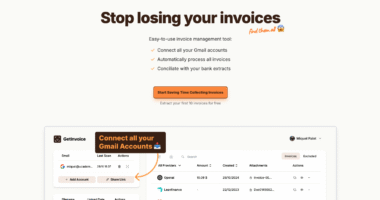Ecommerce personalization software uses AI and machine learning to create tailored shopping experiences based on customer behavior and preferences. These platforms analyze browsing history, purchase patterns, and location data to deliver customized product recommendations, dynamic content, and targeted promotions across multiple channels. With features like real-time tracking and omnichannel integration, retailers can boost conversion rates, increase average order values, and improve customer retention. Understanding the key components helps businesses maximize their personalization strategy’s effectiveness.
Quick Overview
- Ecommerce personalization software uses AI and machine learning to analyze customer data and deliver customized shopping experiences across multiple channels.
- Key features include dynamic content delivery, product recommendations, real-time tracking, and targeted promotional tools for increased conversions.
- Integration with CRM systems and email platforms ensures seamless data flow and consistent personalization across all customer touchpoints.
- Solutions focus on privacy compliance while leveraging first-party data to create tailored experiences that boost customer retention and sales.
- Implementation requires proper data management, cross-departmental collaboration, and strategic resource allocation for optimal results and ROI.
Understanding Ecommerce Personalization Software and Its Impact

Personalization has become the cornerstone of modern ecommerce success. Through specialized software solutions, online retailers can now create tailored shopping experiences that respond to individual customer behaviors, preferences, and needs in real-time.
These powerful tools leverage AI and machine learning to analyze customer data from multiple sources, including browsing history, purchase patterns, and geographic locations. The impact is significant, with 80% of shoppers showing increased purchase likelihood when experiencing personalized interactions. By integrating with CRM and email platforms, these solutions ensure seamless data flow across marketing channels.
The software’s capabilities extend across various channels, from websites to mobile apps and email campaigns. By delivering customized product recommendations, dynamic content, and targeted promotions, businesses can achieve higher conversion rates, increased customer satisfaction, and improved average order values. This technology-driven approach guarantees that each customer interaction is relevant, timely, and engaging.
Key Benefits for Online Retailers and Customers
Online retailers implementing ecommerce personalization software gain substantial advantages that extend to both their business operations and customer relationships. The technology creates a win-win scenario, delivering value across multiple areas of the business while enhancing the shopping experience for customers. Machine learning algorithms power sophisticated recommendation systems that continuously improve product suggestions.
| Benefit | For Retailers | For Customers |
|---|---|---|
| Experience | Higher conversion rates | Tailored shopping journey |
| Value | Increased order sizes | Relevant recommendations |
| Loyalty | Better customer retention | Personalized rewards |
The software’s impact manifests in measurable improvements to key performance indicators. Retailers see enhanced customer lifetime value through personalized upselling and cross-selling strategies, while shoppers benefit from streamlined navigation and contextual features like localized currency and shipping options. This mutual benefit creates stronger brand relationships and drives sustainable business growth through improved customer satisfaction and loyalty.
Essential Features That Drive Customer Engagement

Equipped with advanced technology, modern ecommerce personalization software offers several essential features that substantially boost customer engagement and drive sales growth. These features work together to create tailored shopping experiences through data-driven insights and real-time analytics. Implementing these tools has shown to deliver improved customer experience for both new and returning shoppers.
Key engagement-driving features include:
- Dynamic content personalization that delivers customized messages and promotions
- AI-powered product recommendations based on browsing and purchase history
- Omnichannel integration across web, mobile, and email platforms
- Real-time behavior tracking for optimized customer experiences
- Conversion tools like targeted popups and countdown timers
The software also leverages customer segmentation to provide personalized offers, while social proof elements and loyalty rewards enhance trust and encourage repeat purchases. Through these features, retailers can create meaningful connections with customers while increasing conversion rates and average order values.
Overcoming Implementation Hurdles and Challenges
Success in implementing ecommerce personalization software requires businesses to navigate several complex challenges that can impact adoption and effectiveness. Companies frequently encounter obstacles in three key areas: data management, resource allocation, and organizational alignment.
Data integration poses significant hurdles, as businesses must merge information from multiple sources while maintaining quality and consistency. Poor data can lead to ineffective personalization and reduced customer trust. Additionally, budget constraints often limit access to advanced AI tools and skilled personnel, particularly for smaller companies. The proper implementation of AI and machine learning tools is essential for analyzing customer behavior patterns and delivering relevant personalized experiences.
Effective personalization requires quality data integration, yet many businesses struggle with fragmented information and limited resources for AI implementation.
Many organizations also struggle with internal communication gaps between departments, leading to fragmented execution of personalization strategies.
To overcome these challenges, businesses should focus on establishing clear data governance policies, allocating adequate resources for implementation, and fostering cross-departmental collaboration while maintaining strict privacy standards.
Best Practices for Maximizing ROI

As ecommerce businesses aim to maximize their return on investment from personalization software, implementing proven best practices becomes essential for achieving measurable results. Key strategies focus on data-driven decision making, automated personalization tools, and continuous optimization of customer experiences across all channels. Utilizing customer data platforms helps create comprehensive customer profiles for more effective personalization efforts.
| Strategy | Implementation | Expected Outcome |
|---|---|---|
| Customer Data Analysis | First-party data collection | Improved targeting accuracy |
| AI-Driven Recommendations | Machine learning algorithms | Higher conversion rates |
| Email Personalization | Segmented campaigns | Increased engagement |
| Mobile Optimization | Location-based offers | Better mobile conversions |
| Real-time Analytics | Dynamic content updates | Enhanced user experience |
Successful ROI maximization requires consistent monitoring of performance metrics, regular testing of personalization features, and strategic alignment with customer preferences. Companies should prioritize mobile optimization and AI-powered solutions while maintaining strict compliance with data protection regulations.
Future Trends Shaping Personalization Technology
Five major technological innovations are revolutionizing the future of ecommerce personalization software. AI-driven solutions, combined with hyper-personalization strategies, are expected to boost retail revenues by 30% within the next decade. Privacy-conscious approaches are evolving to meet stricter data regulations while maintaining personalized experiences. Centralized databases enable seamless management of customer preferences and product data across multiple touchpoints.
Key developments transforming the industry include:
- Generative AI creating dynamic, tailored shopping content and advertisements
- Mobile-first platforms with voice-activated shopping assistants
- Predictive analytics integrating with CRM systems for real-time insights
- Privacy-compliant personalization using cookieless tracking solutions
These advancements are reshaping how retailers connect with customers. Machine learning continues to refine predictive models, while behavioral segmentation enables more targeted recommendations. With 96% of retailers facing challenges in implementation, the demand for simplified personalization solutions is growing rapidly. The integration of AI feedback loops optimizes merchandising experiences, ensuring retailers stay competitive in an evolving digital marketplace.
Frequently Asked Questions
How Long Does It Typically Take to See Results From Personalization Software?
Initial results from personalization efforts typically emerge within weeks to months, depending on several factors. Quick wins like improved click-through rates and conversion rates can appear within the first few weeks of implementation.
However, more substantial benefits, such as increased customer loyalty and sustained revenue growth, usually develop over 6-12 months. The timeline varies based on implementation complexity, data quality, and testing strategies. Most retailers see meaningful ROI within 3-6 months.
What Size Business Is Too Small to Benefit From Personalization Software?
Like a small sailboat in search of wind, businesses with annual revenues under $500,000 often struggle to harness the full power of personalization software.
The sweet spot typically starts with companies generating at least $500,000 annually and having 1,000+ monthly website visitors. Below these thresholds, businesses may find the cost and complexity outweigh the benefits, as there isn’t enough customer data or revenue potential to justify the investment.
Can Personalization Software Integrate With Custom-Built Ecommerce Platforms?
Yes, personalization software can effectively integrate with custom-built ecommerce platforms through various methods. Most vendors offer APIs and SDKs specifically designed for custom integrations.
While the process may require additional middleware or custom configurations, modern personalization tools are built with flexibility in mind. Cloud-based solutions typically provide easier integration options, and many vendors offer dedicated support services to guarantee smooth implementation with unique platform architectures.
How Often Should Personalization Strategies and Algorithms Be Updated?
Like a well-tuned engine, personalization strategies need regular maintenance to run smoothly. Best practices suggest daily algorithm retraining to reflect the latest customer behaviors and product changes.
The core strategy should undergo thorough reviews every 30-90 days to incorporate emerging trends and seasonal shifts. Real-time analytics enable dynamic adjustments, while broader strategic updates should align with technological advancements and market conditions. This guarantees top-notch performance and customer satisfaction.
What Percentage of Customers Opt Out of Personalization Features?
Based on industry data, approximately 38% of consumers opt out of personalization features when they perceive tactics as intrusive or “creepy.” However, opt-out rates vary considerably depending on implementation and transparency.
When businesses poorly execute personalization, up to 63% of customers may disengage. Particularly, opt-out rates decrease substantially when companies provide clear data usage policies and deliver genuine value, with only about 20-30% choosing to opt out under these ideal conditions.
Conclusion
As ecommerce personalization software continues evolving, its role becomes increasingly crucial for online retail success. From AI-driven recommendations to seamless omnichannel experiences, these tools are reshaping how businesses connect with customers. While challenges exist, retailers who embrace personalization technology stand to gain significant competitive advantages. The future promises even more sophisticated solutions, making now the perfect time for businesses to invest in personalization strategies that will define tomorrow’s digital commerce landscape.








